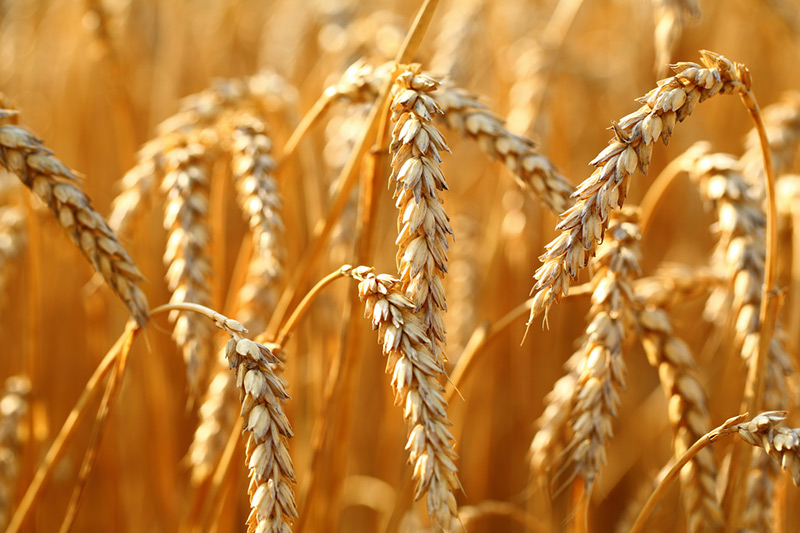Investing.com - U.S. grain futures were lower on Monday, as investors looked ahead to the U.S. Department of Agriculture’s weekly update on U.S. planting progress to gauge crop prospects.
On the Chicago Mercantile Exchange, soybeans futures for January delivery traded at USD12.8688 a bushel, down 0.5%. Prices of the oilseed fell to a session low of USD12.8550 a bushel earlier in the day, the weakest level since October 17.
The January soy contract ended 0.79% lower at USD12.9340 a bushel on Friday.
Prices of the oilseed came under pressure as favorable weather conditions in key soy-growing states in the U.S. was likely to boost the pace of the harvest.
According to the USDA, approximately 63% of the U.S. soy harvest was completed as of last week. The five-year average for this time of year is 69%.
Meanwhile, corn futures for December delivery traded at USD4.3838 a bushel, down 0.25%.
Corn prices traded in a range between USD4.3800 a bushel, the daily low and a session high of USD4.3988 a bushel. The December corn contract settled 0.06% lower on Friday to end at USD4.4000 a bushel.
Futures have been on a downward trend in recent weeks amid expectations this year’s corn harvest in the U.S. will be the largest on record.
Prices of the grain slumped to USD4.3200 a bushel on October 14, the weakest level since August 30, 2010.
The USDA said that nearly 39% of the corn harvest was completed as of last week, roughly in line with market expectations. The agency also said that approximately 60% of the corn crop was rated in ‘good’ to ‘excellent’ condition.
Elsewhere on the CBOT, wheat for December delivery traded at USD6.8763 a bushel, 0.4% lower. Wheat prices slumped to a daily low of USD6.8663 a bushel earlier, the weakest level since October 18.
The December contract settled down 0.83% on Friday to end at USD6.9060 a bushel.
Market players continued to monitor crop prospects and weather conditions in countries in the Black Sea-region and in South America.
Wheat prices have been well-supported in recent weeks as concerns over global crop prospects fuelled expectations demand for U.S. supplies will increase in the near-term.
Brazil is on pace to buy the most wheat from the U.S. in at least 20 years, while China has booked orders for nearly four times as much as it purchased last year.
Corn is the biggest U.S. crop, followed by soybeans, government figures show. Wheat was fourth, behind hay.
On the Chicago Mercantile Exchange, soybeans futures for January delivery traded at USD12.8688 a bushel, down 0.5%. Prices of the oilseed fell to a session low of USD12.8550 a bushel earlier in the day, the weakest level since October 17.
The January soy contract ended 0.79% lower at USD12.9340 a bushel on Friday.
Prices of the oilseed came under pressure as favorable weather conditions in key soy-growing states in the U.S. was likely to boost the pace of the harvest.
According to the USDA, approximately 63% of the U.S. soy harvest was completed as of last week. The five-year average for this time of year is 69%.
Meanwhile, corn futures for December delivery traded at USD4.3838 a bushel, down 0.25%.
Corn prices traded in a range between USD4.3800 a bushel, the daily low and a session high of USD4.3988 a bushel. The December corn contract settled 0.06% lower on Friday to end at USD4.4000 a bushel.
Futures have been on a downward trend in recent weeks amid expectations this year’s corn harvest in the U.S. will be the largest on record.
Prices of the grain slumped to USD4.3200 a bushel on October 14, the weakest level since August 30, 2010.
The USDA said that nearly 39% of the corn harvest was completed as of last week, roughly in line with market expectations. The agency also said that approximately 60% of the corn crop was rated in ‘good’ to ‘excellent’ condition.
Elsewhere on the CBOT, wheat for December delivery traded at USD6.8763 a bushel, 0.4% lower. Wheat prices slumped to a daily low of USD6.8663 a bushel earlier, the weakest level since October 18.
The December contract settled down 0.83% on Friday to end at USD6.9060 a bushel.
Market players continued to monitor crop prospects and weather conditions in countries in the Black Sea-region and in South America.
Wheat prices have been well-supported in recent weeks as concerns over global crop prospects fuelled expectations demand for U.S. supplies will increase in the near-term.
Brazil is on pace to buy the most wheat from the U.S. in at least 20 years, while China has booked orders for nearly four times as much as it purchased last year.
Corn is the biggest U.S. crop, followed by soybeans, government figures show. Wheat was fourth, behind hay.
